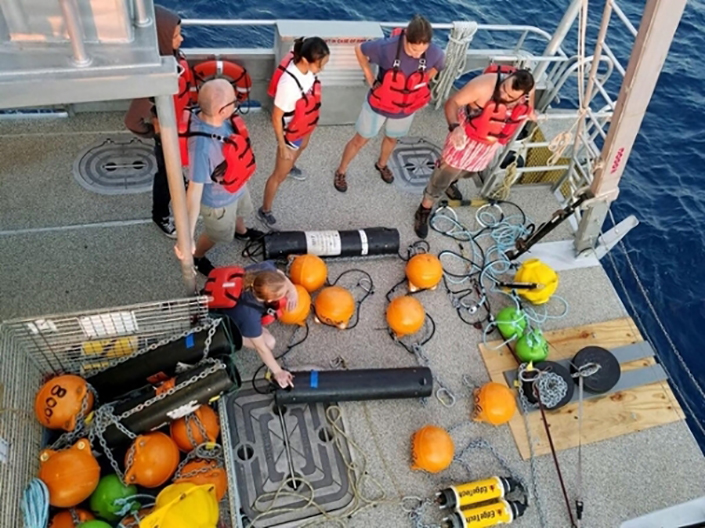Ocean noise: How do sea creatures respond to sounds people make?

There are many ways in which to study how humans are affecting the ocean and the marine life within it. Sound happens to be the way bioacoustician Ana Širovic , a marine biology professor at Texas A&M University at Galveston, measures these interactions.
Širovic’s work recently received funding from the Benioff Ocean Initiative, Flora Family Foundation and the United States Navy’s Living Marine Resources Program. The funding will aid Širovic in better understanding the connection between human movement and whale strikes in the Santa Barbara Channel, as well as developing and deploying recording instruments to study and listen to the multitude of marine species in various areas.
Both grants are the continuation of projects Širovic has been involved with for some time, relating to blue and fin whales and how by capturing and listening to the sounds they make, scientists like Širovic can get closer to approaches for protection or mitigating impact of human activities on the species.
“We are asking biologically-important questions with this research. There are more humans inhabiting the earth and moving, traveling aboard ships and vessels than ever before, so of course we’ve seen an increase in ocean noise and how it is negatively affecting marine animals,” Širovic stated.
Širovic’s first study, through the Benioff Ocean Initiative, uses crowdsourcing for whatever big, important problem they want solved. In this case, the issue is working to understand and mitigate ship strikes with large whales in the Santa Barbara Channel. Said whale species also happen to be endangered or vulnerable to extinction.
The project attacks the issue in three separate ways. The first is through using acoustics by listening to whales in the area in near real-time and then attempting to alert ships passing by. The next approach involves studying whether detection of animals at the surface could be accomplished by an automated method. The last involves looking at historical data and environmental data, then triangulating on maps where and when the occurrence of these animals can be precipitated.

